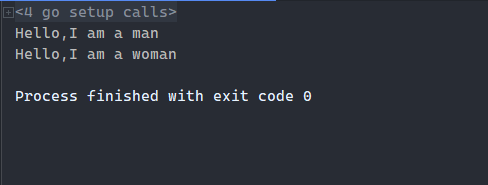基础结构
type Human interface {SayHello()}type Man struct {}func (m *Man) SayHello() {fmt.Println("Hello,I am a man ")}type Woman struct {}func (w *Woman) SayHello() {fmt.Println("Hello,I am a woman")}
simpleFactory.go
// 简单工厂type SimpleFactory struct {cache map[string]CreateFunc // 缓存实例的创建方式}type CreateFunc func() Humanvar (instance *SimpleFactory // 工厂单例once sync.Once // 用来保证instance只会被初始化一次)// 获取工厂实例func New() *SimpleFactory {once.Do(func() {instance = &SimpleFactory{cache: map[string]CreateFunc{"man": func() Human {return &Man{}},"woman": func() Human {return &Woman{}},},}})return instance}// 获取实例func (s *SimpleFactory) Get(key string) (Human, bool) {if v, ok := s.cache[key]; ok {return v(), true}return nil, false}
main.go
package mainimport ("simpleFactory""fmt")func main() {if man, ok := simpleFactory.New().Get("man"); ok {man.SayHello()}if woman, ok := simpleFactory.New().Get("woman"); ok {woman.SayHello()}if child, ok := simpleFactory.New().Get("child"); ok {child.SayHello()}}


